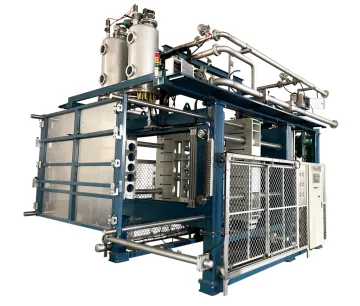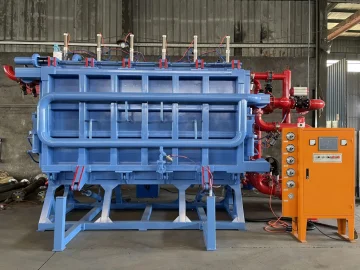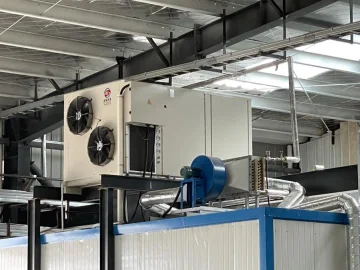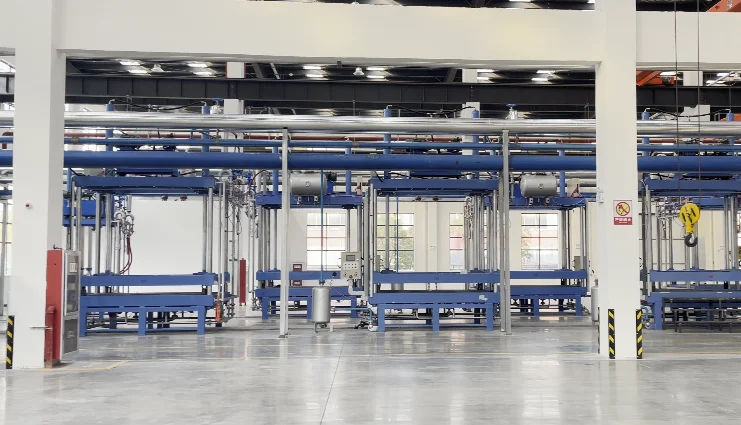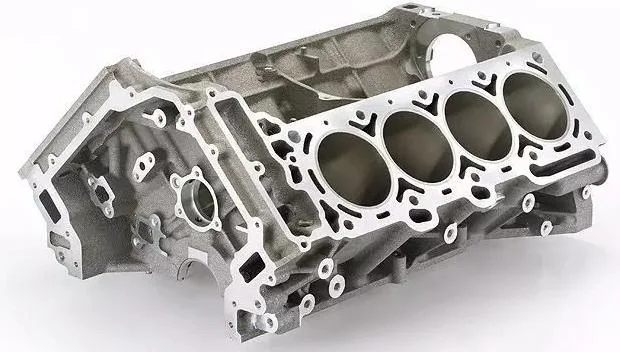
In the world of manufacturing, choosing the right casting method is crucial for the success of your project. Two popular casting techniques, lost foam casting and investment casting, each have their own unique characteristics, advantages, and limitations. In this blog post, we will delve deep into both methods, comparing them to help you determine which one is best suited for your specific project requirements. Additionally, we will introduce you to Hangzhou Ouchen Technology Co., LTD, a leading provider of high – end intelligent lost foam casting equipment.
What is Lost Foam Casting?
Lost foam casting, also known as evaporative pattern casting, is a relatively modern casting process. It involves creating a pattern made of polystyrene foam that represents the desired shape of the final product. This foam pattern is then coated with a refractory material to form a mold. When molten metal is poured into the mold, the foam pattern evaporates, leaving behind a void that the metal fills. Once the metal cools and solidifies, the refractory mold is removed, revealing the cast metal part.
One of the key advantages of lost foam casting is its ability to produce complex shapes with relative ease. Since there is no need to remove a physical pattern from the mold (as the foam evaporates), it can create intricate designs that would be difficult or impossible with other casting methods. This makes it a great choice for industries such as automotive, aerospace, and industrial manufacturing, where complex components are often required.
What is Investment Casting?
Investment casting, on the other hand, is an ancient and highly precise casting method. It begins with creating a wax or plastic pattern of the final product. This pattern is then coated multiple times with a ceramic slurry, which is allowed to dry and harden after each dip. Once the ceramic shell has reached the desired thickness, the wax is melted out, leaving a hollow cavity. Molten metal is then poured into this cavity. After the metal cools and solidifies, the ceramic shell is broken away to reveal the finished product.
Investment casting is renowned for its high level of dimensional accuracy and superior surface finish. It can produce parts with very tight tolerances, making it ideal for applications where precision is of utmost importance, such as in the aerospace and high – end jewelry industries.
Key Differences between Lost Foam Casting and Investment Casting
Materials Used
- Lost foam casting uses polystyrene foam as the pattern material. This foam is lightweight, easy to shape, and relatively inexpensive.
- Investment casting typically uses wax or plastic patterns. Wax is preferred in many cases due to its smooth surface and ease of manipulation, but it can be more costly than foam.
Process
- In lost foam casting, the pattern is evaporated by the heat of the molten metal. This is a relatively straightforward process that doesn’t require complex pattern – removal steps.
- Investment casting involves melting out the wax pattern, which requires careful control of temperature and time to ensure a clean cavity for the metal.
Product Quality
- Investment casting generally offers a higher surface finish and more precise dimensional accuracy compared to lost foam casting. However, lost foam casting can still provide very good results, especially for applications that don’t require the highest level of precision.
- The surface finish of lost foam castings may be slightly rougher, but it can be improved with post – processing techniques.
Size of the Product
- Lost foam casting is well – suited for small to medium – sized products with relatively simple shapes. While it can handle some complexity, extremely large or highly intricate designs may be challenging.
- Investment casting can handle larger and more complex products, making it a better choice for projects that require large – scale, detailed components.
Production Speed
- Lost foam casting usually has a shorter production time. The absence of a complex pattern – removal process and the simplicity of the overall procedure contribute to its faster production rate.
- Investment casting, with its multiple coating and wax – melting steps, generally takes longer to complete.
Cost
- Lost foam casting is often more cost – effective. It requires less equipment and has lower tooling costs, especially for small – batch production.
- Investment casting has higher tooling costs and is generally more expensive, especially for initial orders and when design changes are made.
Advantages and Disadvantages of Lost Foam Casting
Advantages
- Complex Shape Production: Can create complex shapes and thin – walled products with relative ease.
- High Dimensional Accuracy: Offers good dimensional accuracy, suitable for many industrial applications.
- Smooth Surface Finish: While not as smooth as investment casting, it can provide a satisfactory surface finish for many projects.
- No Parting Lines: The final product has no parting lines, which is an advantage in some applications.
- Shorter Production Time: Faster production compared to investment casting, which can be beneficial for meeting tight deadlines.
- Low Tooling Cost: Ideal for prototypes and small – batch production due to its low tooling cost.
- Recyclable Patterns: The polystyrene foam patterns are recyclable, making it an environmentally friendly option.
Disadvantages
- Limited Product Size and Shape Complexity: Best for small to medium – sized parts with simple to moderately complex shapes.
- Limited to Non – Ferrous Metals: Primarily used for non – ferrous metals like aluminum, copper, and brass.
- Refractory Coating Risks: The refractory coating can be punctured if not handled properly, potentially affecting the quality of the casting.
- Toxic Fumes: Produces toxic fumes during the casting process, which requires proper ventilation systems.
- Brittle Patterns: The foam patterns are brittle and can be difficult to handle without damage.
Advantages and Disadvantages of Investment Casting
Advantages
- High Dimensional Accuracy: Can achieve very high levels of dimensional accuracy and tight tolerances.
- Superior Surface Finish: Results in a smooth and high – quality surface finish.
- Complex and Intricate Shapes: Capable of creating highly complex, intricate, and thin – walled products.
- Suitable for Small to Medium Production Runs: Works well for both small – scale and medium – scale production.
- Wide Range of Alloys: Can cast a wide variety of alloys, including precious metals.
Disadvantages
- Longer Production Time: The multiple steps involved make it a time – consuming process.
- Higher Tooling Costs: Tooling costs are higher compared to lost foam casting.
- Costly Initial Orders and Design Changes: Expensive for initial orders and when design modifications are needed.
- Limited Product Size: There are limitations on the size of the products that can be cast.
- Material Waste: Considerable amount of materials are lost during the process, making it less efficient in terms of material usage.
Which Casting Method is Right for Your Project?
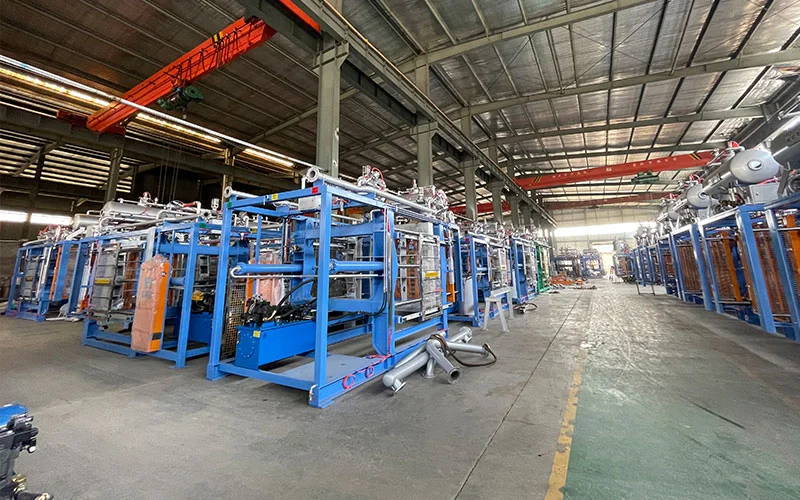
The choice between lost foam casting and investment casting depends on several factors:
- Product Requirements: If your project requires extremely high precision and a flawless surface finish, investment casting may be the better choice. However, if you need to produce complex shapes quickly and cost – effectively, lost foam casting could be more suitable.
- Production Volume: For small – batch production or prototypes, lost foam casting’s low tooling costs make it an attractive option. For larger production runs where high precision is crucial, investment casting may be more appropriate.
- Material Constraints: If you are working with non – ferrous metals, lost foam casting can be a great choice. But if you need to cast a wide range of alloys, including precious metals, investment casting is the way to go.
Introducing Hangzhou Ouchen Technology Co., LTD
When it comes to lost foam casting equipment, Hangzhou Ouchen Technology Co., LTD (OC Technology) stands out as a leading provider. Located in Xindeng Town, Fuyang District, Hangzhou, a hub for EPS (expandable polystyrene) equipment production in China, OC Technology specializes in manufacturing high – end intelligent lost foam casting equipment.
OC Technology offers a range of advanced equipment, including vertical and horizontal foam molding machines with PLC control for automatic adjustments and high-temperature demolding. Their pre-foaming machines expand raw polymer beads like EPS and EPP, ensuring consistent quality. Air dryers, available in various configurations, use air energy heat pumps for temperature control and heat recovery. The central vacuum systems maintain constant pressure with German Nasim pumps, while lift-type paint mixers and maturation silos are designed for efficient mixing and maturation. Additionally, foam sheet machines provide adjustable plate sizes and programmable control systems for customization.
OC Technology emphasizes high efficiency, high quality, and low energy consumption. As an important partner of the China Lost Mold Industry Association/society and a research and development base, they are committed to providing the best solutions for lost foam casting. If you are in the market for lost foam casting equipment, you can contact them at +86 15988479417 or zyh@oc – epc.com. You can also visit their websites https://www.oc – epc.com/, https://www.oc – epc.com/products/, and https://www.oc – epc.com/about/ to learn more about their products and services.
In conclusion, understanding the differences between lost foam casting and investment casting is essential for making an informed decision for your project. And when it comes to lost foam casting equipment, Hangzhou Ouchen Technology Co., LTD is a reliable partner that can help you achieve high – quality results.

